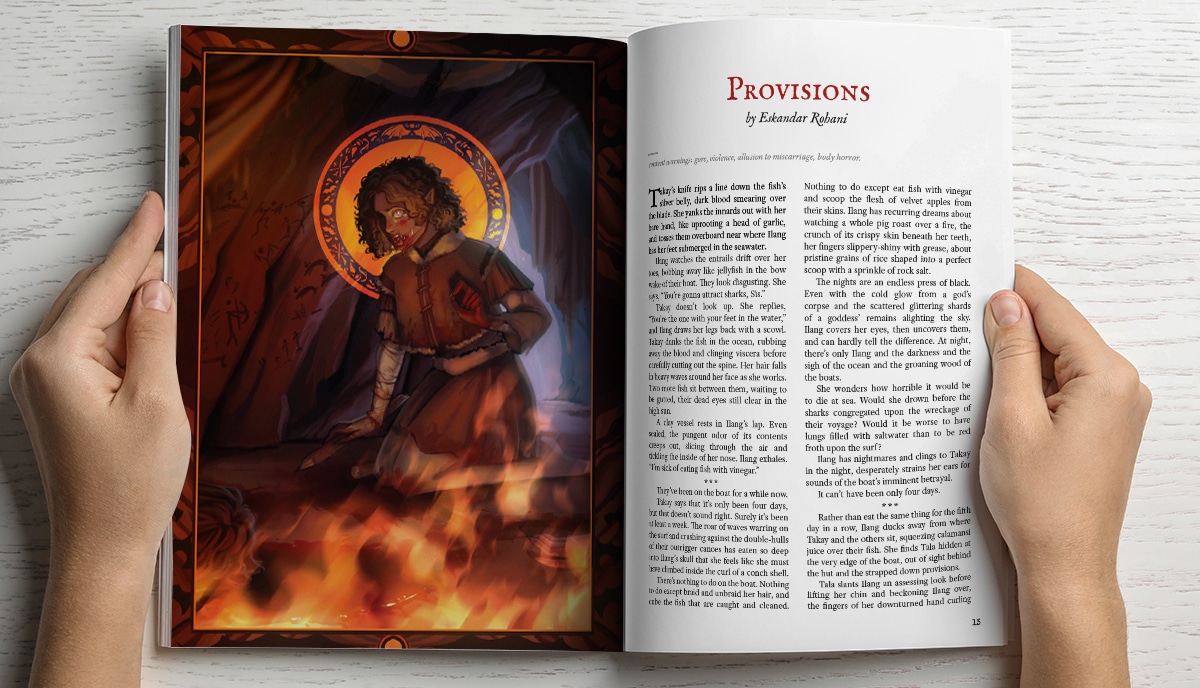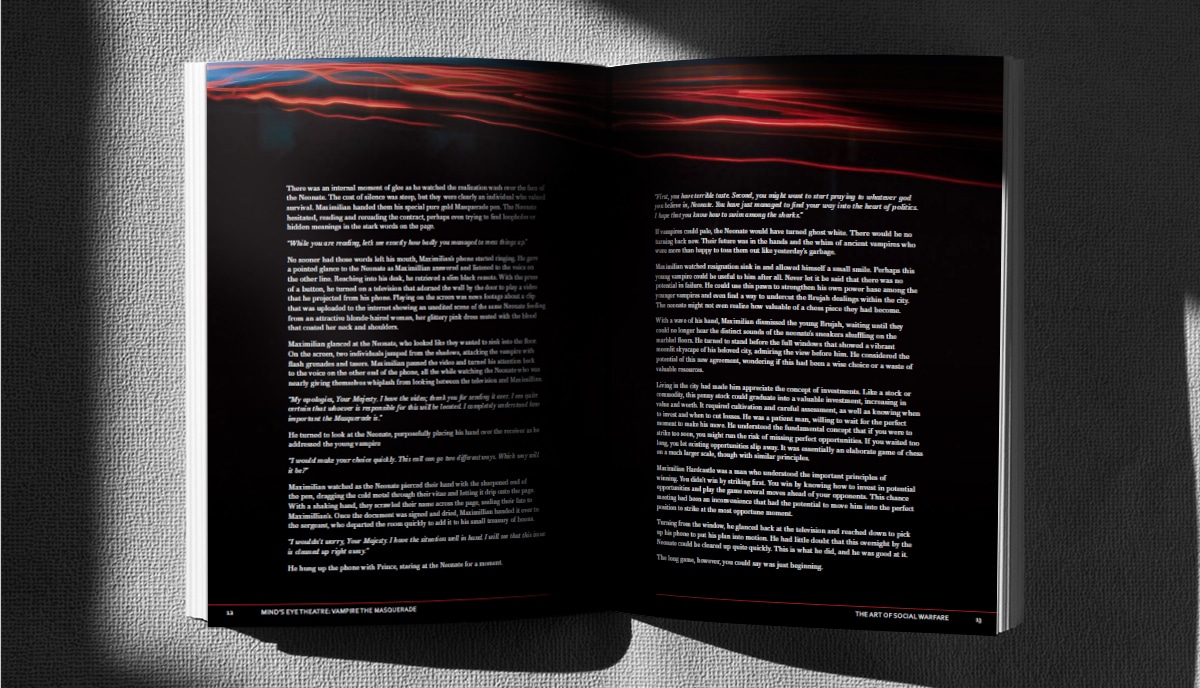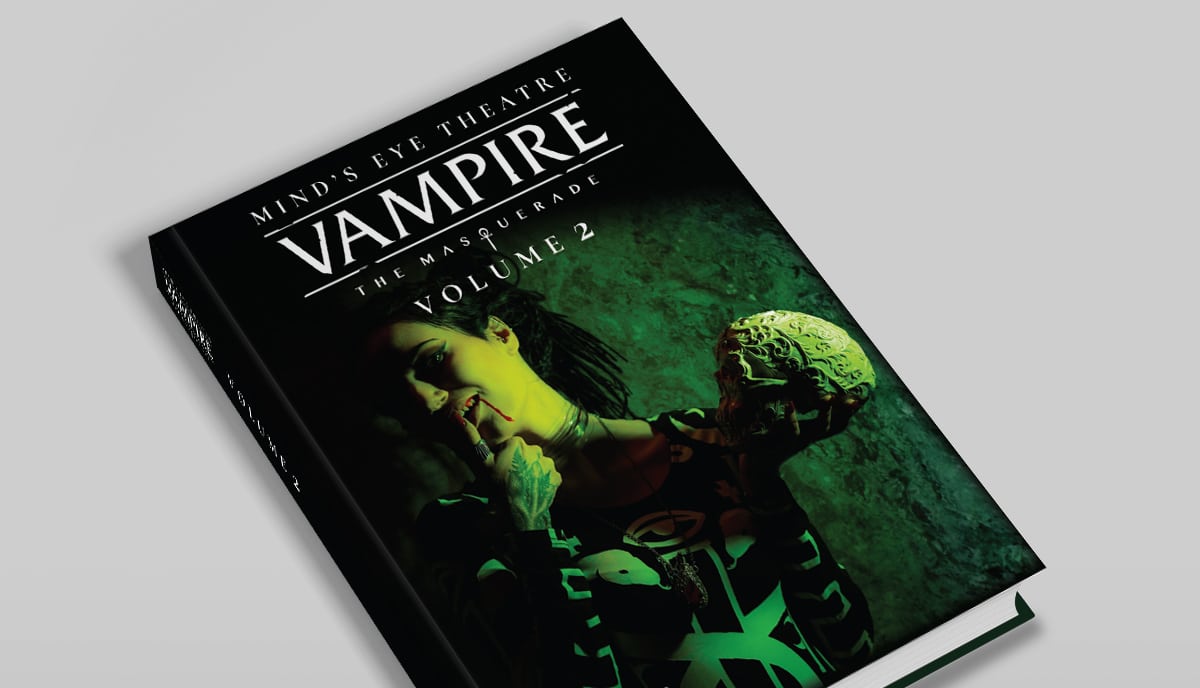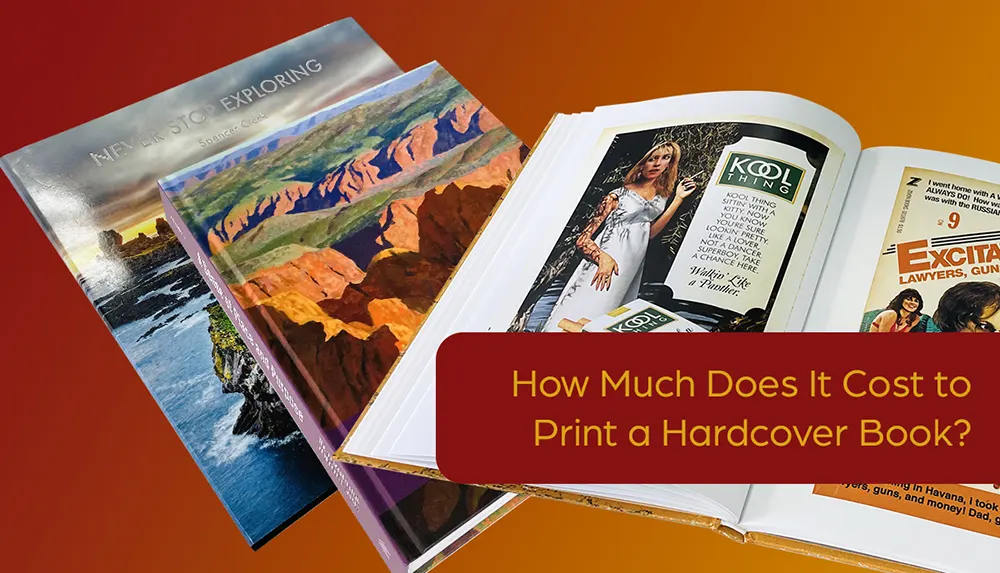Writing a book is a huge achievement. Self-publishing it is the next step for increasing numbers of authors who want to keep creative control over their work. But how do you — and your book — get noticed in a crowded marketplace? That’s what we explain to you here

Self-publishing a book is an incredible achievement, but it doesn’t guarantee success. To give your book the best chance of getting noticed and finding the right readers in a saturated market, you need a well-thought-out book marketing plan. In this comprehensive guide, and drawing on over 25 years of experience working with independent authors and mainstream publishing houses alike, we’ll outline a coherent plan for self-published authors like you to market their books effectively and boost their chances of success. This is a long post, so settle in somewhere comfortable and fix yourself a favorite drink before we get started.
The importance of market research for self-published authors
As a self-published author, conducting thorough market research is a crucial step in making sure your book gets the best start. By understanding your target audience and the current market landscape, you can create a book that resonates with readers and stands out from the competition or, if you’ve written it already, you can position it in the right niche within the pre-existing market options. So, let’s explore the essential steps and strategies for effective market research as a self-published author. Market research provides valuable insights into the preferences, trends, and demands of your target readers. Here’s how to do it:
Define your ideal reader
The first step in market research is to define your ideal reader. Consider their demographics—such as age, income, sex, gender, and marital or relationship status—also, interests, reading preferences, and any unique characteristics that set them apart. This understanding will guide your decision-making process throughout the writing and marketing stages.
Find comparable bestselling titles
To gain insights into your target market, search for comparable bestselling titles in your genre. Look for books that are like what you plan to write or have already written and analyze their success. Pay attention to factors such as
- Number of pages
- Book covers
- Pricing
- Publishers
- Number of reviews
- Review content
- Design elements
- Table of contents
- Methods used to engage readers
- Level of usefulness or the experience the book offers
By studying these comparable titles, you can gather valuable information about what resonates with readers and identify opportunities to place your book in the right readers’ hands.
Analyze book covers and titles
Book covers and titles play a crucial role in attracting readers’ attention and selling copies. Analyze the covers and titles of the bestselling books in your genre to understand the visual and textual elements that appeal to your target audience. Are there recurring themes and images? What color schemes and combinations seem to be the most popular? What fonts have they used? Is the cover art photographic, abstract, painted, or… ? What does the cover, overall, “say” to the potential reader?
Examine the subtitles and keywords used in these books. Subtitles can enhance the discoverability of your book and allow you to stand out from the competition. You should also read the blurb and follow up on the key reviews to find out why people who liked the book liked it and why people who didn’t, didn’t.
Study book descriptions
Book descriptions—which appear on retail sites or in book buyer’s catalogs and shouldn’t be confused with “blurbs” which are printed on the back cover—are your opportunity to entice potential readers and convince them to purchase your book. Study the book descriptions of comparable titles to understand the keywords and persuasive language used. Note the structure, tone, and content that effectively communicates the value of the book to readers.
Read reviews
Reviews provide invaluable insights into readers’ perspectives and preferences. Read reviews of comparable books to identify recurring themes, positive and negative feedback, and the aspects readers appreciate or dislike. This information will help you refine your book’s content and address potential concerns or gaps in the market.
Identify market gaps and unique selling points
Based on your research, identify the gaps in the market and the unique selling points your book can offer. Determine what is missing or underserved in your genre and how your book can provide a fresh perspective, a unique voice, or valuable insights. This will help you position your book effectively and attract readers who are seeking something different. If you’re writing non-fiction, make sure that your book includes valuable information or a unique angle that can’t be found in anything that’s already been published and that you’ve identified as something important to potential readers that they want to know about. If you’re writing fiction, then while you’ll want to keep within the readership’s expectations for your genre, still try to develop a unique voice and storytelling style that isn’t quite like anyone else’s.
Refine your book’s content and marketing strategy
Armed with the insights gained from market research, refine your book’s content to align with the preferences and expectations of your target audience. Incorporate the elements that readers appreciate while addressing any shortcomings identified in the market. If you’ve already published your first book, don’t worry. You can use this information to help you write a better second, third, fourth, and fifth book. Whether fiction or non-fiction, it’s common knowledge now that successful self-publishers are those who build up a strong portfolio of assets—which means publishing more books!
Test and iterate
Once you have applied your market research insights to your book and marketing strategy, it’s important to test and iterate. Pay attention to reader feedback, monitor sales performance, and be open to making adjustments based on the developing needs and preferences of your target readers.
Market research is a crucial step in the journey of a self-published author. By understanding your target audience, analyzing the competition, and identifying gaps in the market, you can create a book that resonates with readers and increases your chances of success. You must think in terms of running a business. And that means that your books are your products. As with any other enterprise, tailor those products to the market. Many self-published writers call this “writing to market” and it’s a sensible approach which has been proven to offer the best chances of success.

Building a successful book marketing launch team as a self-published author
You can’t just publish a book and expect it to fly off the shelves. You need to plan and execute a successful launch strategy. In most cases, you’ll need a group of keen collaborators—your launch team—to help you. Launching a book can be an overwhelming task, but with the right team by your side, you can achieve outstanding success. A book marketing launch team is a group of dedicated individuals who help promote your book and create a buzz around its release. So now, let’s explore the key steps to building and managing an effective book marketing launch team as a self-published author. We will cover the differences between an ARC team, a Beta team, and a Street team, how to find and organize team members, and how to keep them engaged throughout the process.
Understanding the different teams: ARC, beta, and street
Before diving into the process of building a book marketing launch team, it’s important to understand the differences between an ARC team, a Beta team, and a Street team.
-
ARC Team (Advanced Review Copy Team)
This team receives a copy of your book before the launch. Their role is to read the book and leave a review on launch day, helping to build up your reviews from the start.
-
Beta Team
A Beta team comprises people who read your book during the writing process or after it’s completed. They provide feedback and recommendations to help improve your writing.
-
Street Team
This team is passionate about promoting your book. They actively promote it on launch day, using strategic methods to boost sales and create buzz.
While these teams can have distinct purposes, it’s possible to combine their functions. Many authors use their ARC team for all three purposes, maximizing the benefits of their team.
Finding ARC team members
To build your ARC team, you need to find potential members who will read your book before the launch and leave a review. Here are some effective ways to find ARC team members:
-
Social Media Callout
Make a post on social media platforms, such as Facebook, asking if any of your friends would like to be part of your ARC team.
-
Email Signup in Previous Books
Include a call for ARC readers in the back of your previous books. This can generate email sign-ups from interested readers.
-
Engage in Niche/Genre Groups
Take part actively in Facebook groups or forums related to your book’s niche or genre. When you feel comfortable, ask if anyone would be interested in being a beta reader, emphasizing their insight in the genre.
-
Tweet Your Request
Use Twitter to let your followers know that you’re looking for ARC readers.
-
Network with Other Authors
Connect with authors in the same genre and offer to be their beta or ARC reader in return. This mutual support can help expand your ARC team.
Consider using services like NetGalley, Booksprout, Booktasters, BookSirens, or Hidden Gems Books to find additional ARC reviewers who are interested in your book.
Organizing your ARC team
Managing your ARC team is crucial for a successful book launch. Keep track of your team members and their progress using a tracking method like Google Sheets or Excel. Here’s what you should include in your tracking sheet:
-
Name and Contact
List the names of your team members and their preferred contact method (email, Facebook messenger, etc.).
-
Last Communications
Keep a record of your last communication with each member. Regularly check in with them to maintain an active connection.
-
Information
Add notes about each team member, such as recommendations they provided after reading your book or any specific insights they shared.
-
ARC Sent
Mark whether each team member has received an advanced review copy. This helps you differentiate between members who have copies and those who don’t.
-
Review Published
Check if a review has been published by each team member. This step is crucial for ensuring the success of your review strategy.
Using a tracking sheet will help you stay organized and ensure effective communication with your team members. Alternatively, you can use platforms like StoryOrigin to simplify your ARC team management.
Keeping your ARC team engaged
To encourage active participation and maximize the effectiveness of your ARC team, it’s important to keep them engaged throughout the launch process. Here are some tips to achieve this:
-
Personal and Individualized Communications
Avoid mass emails and instead maintain personal communications with each team member. This personalized approach makes them feel valued and accountable.
-
Beyond Requests
Regularly communicate with your team beyond just asking for reviews. Check in with them, share updates on your progress, and seek their opinions and advice.
-
Seek Input and Advice
Empower your ARC team members by seeking their input and recommendations. Ask for their thoughts on the launch or the book itself. This involvement makes them feel like valued contributors to your success.
By consistently engaging with your ARC team and making them an integral part of the process, you’ll increase their motivation to leave reviews and promote your book.
Sending out ARC copies
Once you have your ARC team organized and engaged, it’s time to send out the advanced review copies of your book. There are a few ways to do this:
-
Word Document
The simplest method is to send a Word document to your team members. However, this may not be the most convenient option for readers who prefer e-readers or specific file formats.
-
Formatted E-book Files
Format your book into various e-book formats, such as .mobi or .epub. This allows readers to choose their preferred format. However, this method can be complicated, as you’ll need to provide instructions for downloading and installing the files on different devices.
-
Use an ARC Delivery Service
Consider using an ARC delivery service like Book Funnel. These services ensure easy distribution of your book in preferred formats and provide instructions for installation. They also offer security measures to prevent unauthorized sharing of the book.
By using an ARC delivery service, you simplify the process for both you and your team members, ensuring a seamless experience.
Building a successful book marketing launch team is essential for a self-published author. By understanding the different teams, finding committed members, organizing your team effectively, and keeping them engaged throughout the process, you can create a strong support system for your book launch. Remember to personalize your communications, seek feedback and advice, and use tools like tracking sheets or platforms like StoryOrigin to streamline the management of your team. With a dedicated team by your side, you can generate buzz, gain reviews, and achieve a successful book launch as a self-published author.
How to use video to boost your self-published book launch
With the rise of online platforms, authors have a plethora of marketing tools at their disposal. While social media and Amazon book ads are commonly used, one platform that is often overlooked is YouTube. But you shouldn’t ignore the power of video marketing to help you get noticed as a self-published author. Here are several helpful tips and ideas on how to use YouTube to promote your self-published book successfully.
Why YouTube?
YouTube is the largest video-sharing platform globally, second only to Google in terms of website traffic. It is a hub of book discussions, reviews, and writing-related content, making it an ideal space for authors to engage with their target audience. By leveraging YouTube’s vast user base, you can reach a broader audience and generate interest in your book.
Creating videos may seem intimidating for authors without technical expertise, but it doesn’t have to be. With basic equipment and a little creativity, you can start your own YouTube channel and effectively promote your book.
Tips on creating YouTube videos
Before diving into video creation, let’s discuss some essential tips to help you get started:
-
Camera and Microphone
You don’t need expensive equipment to produce high-quality videos. Smartphones, such as iPhones or Android devices, often have excellent camera capabilities. Alternatively, you can use the built-in webcam on your laptop. Ensure that your audio is clear by investing in an external microphone if necessary.
-
Tripod and Lighting
Stabilize your camera with a tripod to avoid shaky footage. Adequate lighting is crucial for clear visuals. You can use natural light or inexpensive lighting equipment to enhance the quality of your videos.
-
Editing Software
While you can upload raw footage, editing your videos adds a professional touch. Many free video editing software options are available, simplifying the editing process for beginners.
When filming your videos, consider:
-
Set up a professional backdrop
Choose a clutter-free background for your videos. A blank wall or a clean office space can serve as suitable backdrops. You can also hang a banner of your book to add a personal touch.
-
Draft a script
Planning your content in advance with a script or a bulleted outline helps ensure a smooth filming and editing process. Even talented speakers benefit from having a structure to follow.
-
Be genuine
Authenticity is key to connecting with your audience. Avoid being overly sales-oriented and focus on building a genuine connection with your viewers.
-
Remind viewers to like and subscribe
Encourage your viewers to engage with your channel by asking them to like and subscribe to your videos. This helps increase your subscriber count and improves the visibility of your content.
When uploading your videos, pay attention to:
-
Compelling titles, descriptions, and thumbnails
Use attention-grabbing titles, informative descriptions, and visually appealing thumbnails to entice viewers to click on your videos. Optimize these elements with relevant keywords to improve searchability.
-
Relevant keywords
Incorporate relevant keywords in your titles and descriptions to ensure your videos appear in search results. Identify unique aspects of your book and your target audience to select the most effective keywords.
-
Consistent content
Regularly post new content on your YouTube channel to engage your audience and maintain their interest. Aim to upload videos at least once a week, or bi-weekly if that suits your schedule better.

With these tips in mind, let’s explore ideas for content and promoting your book on YouTube:
Livestream your book launch party
Hosting a book launch party is an exciting way to celebrate and promote your book. Consider livestreaming parts of the event on YouTube using the platform’s live streaming feature. Whether it’s an in-person gathering or a virtual event, livestreaming allows your audience to take part in the festivities and creates a buzz around your book release. You could collaborate with your local independent bookstore to host the event, which might provide them with added publicity, too.
Create a book trailer
Book trailers, similar to movie trailers, are effective promotional tools. These short videos offer a glimpse into your book’s plot, characters, and themes, generating excitement among potential readers. You can create a book trailer using graphic art, text, or even video footage. Keep it concise, engaging, and aligned with the tone of your book.
Discuss book-related topics
Create content centered on the topics explored in your book. This could include educational videos, discussions, or analysis of themes and issues addressed in your writing. By providing valuable information and insights, you can attract viewers interested in those specific topics, increasing their likelihood of becoming readers.
Share book readings
Reading excerpts from your book on YouTube is an excellent way to showcase your writing style and captivate potential readers. Select engaging passages or chapters and film yourself reading them aloud. You can create a series of reading videos, each highlighting different aspects of your book, such as plot, characters, or your favorite scenes.
Host live Q&A sessions
Once you’ve established a following on YouTube, consider hosting live Q&A sessions or book discussions. This interactive format allows you to connect directly with your audience, answer their questions, and provide insights into your writing process. Live sessions foster engagement and deepen the connection between you and your readers.
Share writing tips and advice
Leverage your experience as an author by sharing writing tips and advice on your YouTube channel. This content not only provides value to aspiring writers, but also positions you as an authority in your field. You can discuss various writing techniques, publishing tips, or the challenges and triumphs of the writing journey.
Vlog about your author journey
Vlogging, or video blogging, offers a personal and behind-the-scenes look into your life as an author. Share snippets of your writing process, book signings, or conferences you attend. Vlogs allow your audience to connect with you on a more personal level and gain a deeper understanding of the author of the book.
Collaborate with book reviewers
Reach out to book reviewers on YouTube and collaborate with them to promote your book. Book reviewers have dedicated audiences interested in discovering new reads. By partnering with them, you can tap into their viewer base and gain exposure for your book. Consider sending them a copy of your book for an honest review or taking part in joint discussions.
Cross-promote your YouTube channel
Maximize the visibility of your YouTube channel by cross-promoting it on other platforms. Include links to your channel in your website, social media profiles, email signature, and author bio. Encourage your existing followers to subscribe to your channel and engage with your content.
By utilizing these strategies on YouTube, you can effectively promote your self-published book and connect with a wider audience. Remember to focus on creating valuable and engaging content that resonates with your target readers. With dedication and consistency, your YouTube channel can become a powerful marketing tool for your book.
Video marketing on YouTube provides authors with a unique opportunity to engage with their audience, showcase their work, and build a loyal following. By following these tips and implementing the suggested promotion ideas, you can effectively leverage the power of YouTube to boost your self-published book launch.

Other free platforms for promoting your self-published book
In a saturated market, it’s crucial to explore free platforms and techniques to promote your self-published book effectively. By leveraging the power of online platforms and implementing strategic marketing strategies, you can increase your book’s visibility, attract more readers, and ultimately boost sales. In this comprehensive guide, we will explore a variety of free platforms and techniques that you can use to promote your self-published book successfully.
Goodreads: The social media site for book lovers
One of the most powerful platforms for promoting your self-published book is Goodreads. With millions of avid readers and book enthusiasts, Goodreads provides an excellent opportunity to connect with your target audience directly. By creating an author profile, adding your book to the platform’s database, and actively engaging with readers through groups, discussions, and events, you can generate buzz and build a loyal following. Goodreads offers features like giveaways, author Q&As, and advertising options to further enhance your book’s visibility.
Harness the power of social media
Social media platforms, such as Facebook, Twitter, Instagram, and LinkedIn provide immense opportunities for self-published authors to promote their books. Create dedicated author profiles or pages on these platforms, engage with your audience, and share interesting content related to your book. Use eye-catching graphics, engaging captions, and relevant hashtags to attract attention. Collaborate with other authors, join writing groups, and take part in book-related discussions to expand your network. Explore Facebook groups, Twitter chats, and Instagram book clubs to connect with potential readers and gain exposure.
Create a professional author website
Having a professional author website is essential for establishing your online presence and providing a hub for readers to learn more about you and your books. Invest time in creating a visually appealing and user-friendly website that showcases your book covers, author bio, book descriptions, sample chapters, and links to purchase your books. Optimize your website for search engines by incorporating relevant keywords, and consider starting a blog to share updates, writing tips, and behind-the-scenes insights. Remember to include links to your social media profiles and Goodreads author page on your website.
Blogging to connect with readers
Blogging is an effective way to connect with potential readers, showcase your writing skills, and establish yourself as an authority in your genre. Start a blog on your author’s website or explore platforms like Medium and WordPress to share engaging and informative content related to your book’s themes, writing process, or industry insights. Write guest posts for popular blogs in your niche to reach a wider audience and drive traffic back to your website. Don’t forget to engage with your blog readers through comments and encourage them to sign up for your newsletter for updates on your books.
Engage with online communities and forums
Online communities and forums dedicated to books and writing are excellent places to connect with like-minded individuals, gain insights, and promote your self-published book. Platforms like Reddit, Quora, and Goodreads groups host vibrant communities of readers, writers, and book enthusiasts. Take part in discussions, answer questions, and provide valuable insights related to your book’s genre or writing process. However, always ensure your engagement is genuine and not overly promotional. Focus on building relationships and establishing yourself as a valuable contributor to the community.
Guest blogging: expand your reach
Guest blogging is a powerful strategy for expanding your reach and gaining exposure to new audiences. Identify popular blogs and websites in your book’s genre or writing niche and reach out to them with well-crafted guest post pitches. Offer unique and valuable content that aligns with their audience’s interests. In your author bio, include an interesting call-to-action and a link to your website or book. Guest blogging not only helps you establish credibility as an author, but also drives traffic back to your website and increases your book’s visibility.
Tap into the podcasting world
Podcasting has emerged as a popular medium for storytelling and sharing knowledge. Consider starting your own podcast, where you discuss topics related to your book’s themes, interview other authors or industry experts, or share writing tips and advice. Alternatively, pitch yourself as a guest on existing podcasts in your genre. Engage in meaningful conversations, share insights, and promote your book during the episode. Podcasting allows you to reach a dedicated audience of listeners who are hungry for engaging content, providing a unique opportunity to promote your self-published book.
Get featured on book review sites
Book review sites play a crucial role in influencing readers’ purchasing decisions. Research and reach out to reputable book review sites that cater to your book’s genre. Submit your book for consideration and, if accepted, await an honest review. Positive reviews can significantly boost your book’s credibility and attract new readers. Consider offering free review copies to influential book bloggers or bookstagrammers for an honest review and social media exposure. Remember to always follow each reviewer’s submission guidelines and maintain a professional and courteous approach.
Collaborate with influencers and bookstagrammers
Influencer marketing has gained tremendous popularity in recent years. Identify influencers and bookstagrammers in your genre with a significant following and engagement. Reach out to them with personalized pitches, offering a free copy of your book or hosting a giveaway in collaboration with them. Influencers can create engaging content featuring your book, share honest reviews, or host author interviews. Their endorsement can significantly affect your book’s visibility and attract a dedicated following of readers who trust their recommendations.
By harnessing the power of platforms like Goodreads, social media, blogging, online communities, guest blogging, YouTube, podcasts, book review sites, and influencer collaborations, you can maximize your book’s visibility, attract readers, and ultimately achieve success in the competitive world of self-publishing. Embrace these strategies, showcase your unique voice, and watch your self-published book soar to new heights.
Remember, promotion is an ongoing process, so don’t be afraid to experiment, adapt, and explore additional avenues to reach your target audience. With dedication, perseverance, and a well-executed promotional strategy, your self-published book can find its way into the hands of eager readers worldwide.
Email marketing strategies for self-published authors
While social media and content marketing through blog posts are popular tactics, one marketing method that should not be overlooked is email marketing. Email marketing has proven to be a powerful tool for acquiring new customers and driving sales. We’d like to share with you six effective email marketing strategies specifically tailored for self-published authors.
Offer incentives
For email marketing, offering incentives can be a game-changer for self-published authors. Incentives provide an interesting reason for potential readers to sign up for your email list. Consider giving away a free book, a report, or a case study related to your genre or niche. By offering valuable content for free, you not only establish your expertise but also create a sense of reciprocity. Readers who receive your freebie are more likely to engage with your emails, open your future communications, and ultimately purchase your books.
Build authority through value
Establishing authority is essential for any self-published author. Readers are more likely to choose your books over others when they perceive you as an expert in your field. To build authority, focus on providing value to your audience. Share valuable tips, insights, and exclusive content through your email newsletters. By consistently delivering high-quality content, you will earn the trust and loyalty of your subscribers, which can translate into increased book sales.
Write emails worth reading
As an author, it’s crucial to maintain a high standard of quality in all aspects of your communication, including your emails. Take the time to ensure that your grammar and spelling are flawless. Structure your email so that it’s easy to read and digest. Avoid long blocks of text and instead use brief paragraphs and bullet points to convey your message effectively. Remember, your emails reflect your writing skills and professionalism, so make sure they are impeccable.
Create an email sequence schedule
Managing your email marketing campaigns can be time-consuming, especially when you have multiple books to promote and various marketing tasks to handle. To streamline this process, consider creating an email sequence schedule. An email sequence is a series of pre-written emails that are automatically sent to subscribers at predetermined intervals. By setting up an email sequence, you can ensure consistent communication with your audience with no manual intervention. Take advantage of email marketing software with built-in automation features to simplify your email marketing efforts.
Test, measure, tweak, optimize
Continuously testing, measuring, tweaking, and optimizing your emails is essential for maximizing the effectiveness of your email marketing campaigns. Pay attention to key metrics, such as open rates, click-through rates, and conversion rates. Experiment with different subject lines, email formats, and calls to action to see what resonates best with your audience. Use A/B testing to compare different versions of your emails and determine which variations yield the highest engagement and conversion rates. By regularly optimizing your emails, you can refine your email marketing strategy and achieve better results.
Develop a genuine relationship with your list
To cultivate a loyal fan base and drive book sales, it’s crucial to develop a genuine relationship with your email subscribers. Treat them as real people with preferences, expectations, and needs. Focus on providing value and addressing their interests and concerns. Personalize your emails by addressing subscribers by their names and tailoring the content to their specific interests. By nurturing a genuine relationship with your subscribers, you can create a community of dedicated readers who eagerly await your book releases and recommend your work to others.
By implementing these six email marketing strategies — offering incentives, building authority through value, crafting impeccable emails, creating an email sequence schedule, testing and optimizing, and developing a genuine relationship with your list — you can maximize the impact of your email marketing campaigns and drive book sales.
Strategic pricing strategies for self-published authors
In the competitive world of self-publishing, setting the right price for your book can significantly affect your success. Finding the balance between attracting readers and maximizing profits requires strategic pricing strategies. Whether you’re publishing an ebook, paperback, or hardcover edition, understanding key considerations and industry trends is essential. In this comprehensive guide, we’ll explore various factors to help you determine the optimal price for your self-published book.
Understanding the market and genre pricing
With pricing your book, it’s crucial to consider the market and genre. Researching the current pricing trends for books in your specific genre can provide valuable insights. Analyze the list prices of comparable books, especially those by indie authors who have found success in your genre. This information will help you identify the average price point within your genre, ensuring your book aligns with readers’ expectations.
Differentiating from traditional publishers
Self-published books often offer readers a more affordable option compared to traditionally published books. As a self-published author, you have the advantage of setting your own prices, allowing you to compete effectively in the market. While traditional publishers may have higher overhead costs, your flexibility enables you to price your book competitively.
Consider leveraging this advantage by offering your book at a slightly lower price point than traditionally published books in your genre. This can attract price-conscious readers and help you gain a competitive edge. Keep in mind that self-published authors often release books more frequently, allowing for a higher volume of sales.
Word count and format considerations
The length and format of your book can also influence its pricing. Longer books often justify a higher price tag, as they require more time and effort to write and edit. Readers may expect to pay more for a substantial book that offers a comprehensive reading experience. Conversely, shorter books, such as novellas or short guides, may warrant a lower price to remain competitive.
The psychology of pricing
Buyer psychology plays a significant role in book pricing. Readers have certain expectations for the price of a book, and understanding these expectations can influence your pricing strategy. One common pricing tactic is to end prices with .99, as this has become the industry standard in the US, EU, and UK. Research has shown that prices ending in .99 are perceived as more affordable and attract buyers. So, readers see a price tag of $14.99 as about 14 bucks, when in reality it’s closer to 15 bucks.
However, it’s important to consider international markets and currency conversions when setting prices. Rounding prices to the nearest whole number may be necessary to align with regional expectations. Remember that readers often associate higher prices with higher quality, so setting your book’s price too low might lead to potential buyers questioning its value.
Analyzing competitor pricing
Studying your competition is a crucial step in determining the right price for your self-published book. Identify other self-published authors in your genre and analyze their pricing strategies. While it’s important to be aware of the prices set by traditionally published authors, focus primarily on indie authors who have found success in your genre. This will provide you with a realistic benchmark to guide your pricing decisions.
Pricing paperback and hardcover editions
If you plan to publish your book in physical formats, such as paperback or hardcover, additional considerations come into play. The pricing of these editions should reflect the production costs, page count, and market expectations for physical books. Paperback novels, on average, cost around about the $14 mark up to $20, with prices at the higher end reserved for books from established authors with a dedicated readership.
Hardcover books, known for their higher production costs command higher prices. Fiction hardcovers are typically priced between $20 to $25. However, keep in mind that paperback editions are often preferred by readers because of their affordability and ease of handling. Consider your target audience and their preferences when deciding between paperback and hardcover editions.
Testing and adjusting pricing
To optimize your book’s pricing, consider conducting tests and monitoring the results. If you have an established sales history, you can experiment with adjusting your book’s price by a dollar or two and observe the impact on sales over a month or two. Keep promotional activities consistent during these tests to get accurate insights. While testing, monitor both the income earned and the number of books sold to evaluate the effectiveness of price adjustments. Consider running promotions and discounts at strategic times, such as during seasonal reader trends or holidays, to attract new readers and boost sales.
Developing a long-term pricing strategy
Creating a long-term pricing strategy is crucial for self-published authors seeking sustained success. Set dates on your calendar to review sales, adjust pricing, and run promotions or discounts based on your market research and sales data. Taking a proactive approach to pricing will help you maintain competitiveness and attract new readers while maximizing your royalties.
Remember that pricing is just one component of a comprehensive marketing plan. Combine strategic pricing with effective book marketing strategies to build a loyal reader base and increase your book’s visibility. By continuously evaluating and adjusting your pricing strategy, you can ensure long-term profitability and reader engagement with your self-published book. By employing strategic pricing strategies, you can position your self-published book for success in the competitive publishing landscape.
Book marketing is an ongoing process, even after your initial launch. Continuously seek opportunities to promote your book, engage with readers, and expand your network. Attend events, take part in speaking engagements, and explore additional marketing avenues to keep your book in the spotlight. Remember, marketing your book is a journey that requires dedication, creativity, and perseverance. But we hope that the ideas and strategies we’ve shared here will help you get a good overall notion of what’s needed for a self-published author to get noticed and make consistent sales. If you were looking for a magic wand to make it easy, you’ll be disappointed. But if you’re serious about your objectives and prepared to put in the work, you have every chance of success.
Talk to us!
As one of the world’s leading offset book printers, we know this business inside out and have a ton of experience helping independent authors realize their writing dreams. Get in touch for an informal chat about what you have in mind and how we can help. And if you’re ready to go to print, we’ll happily give you a no-obligation quote for the job. We can’t wait to hear from you!




